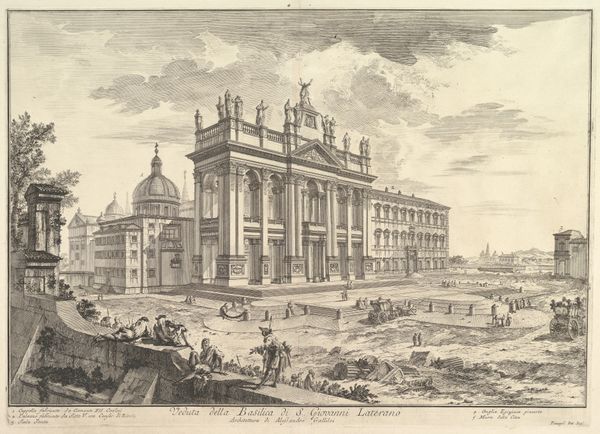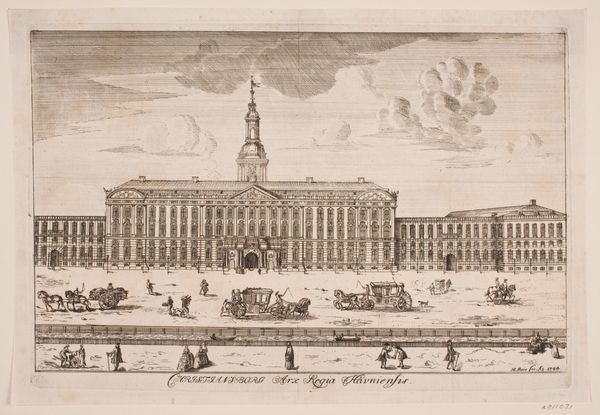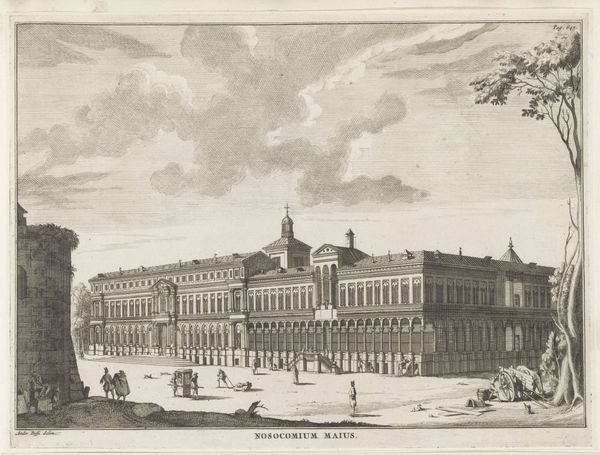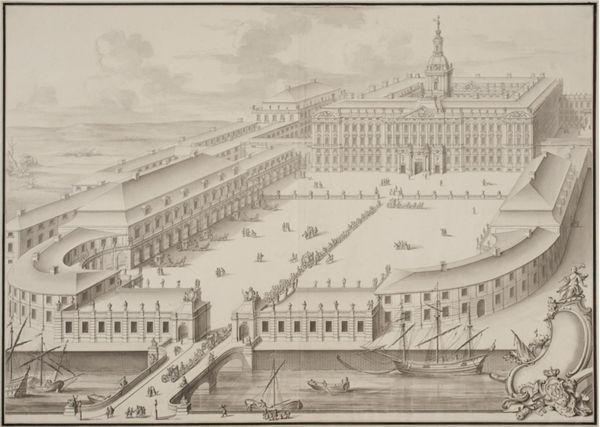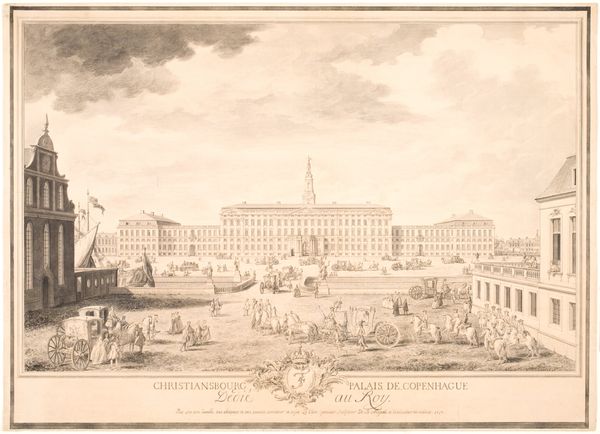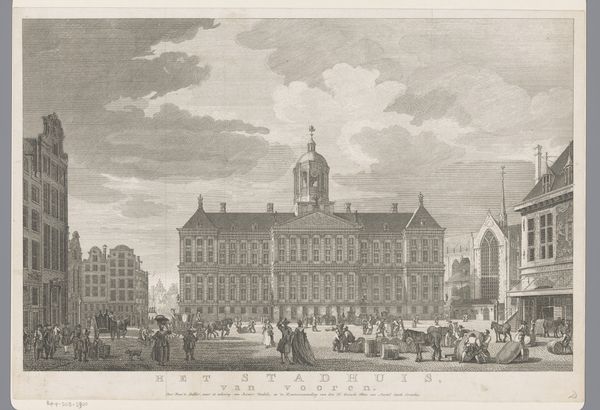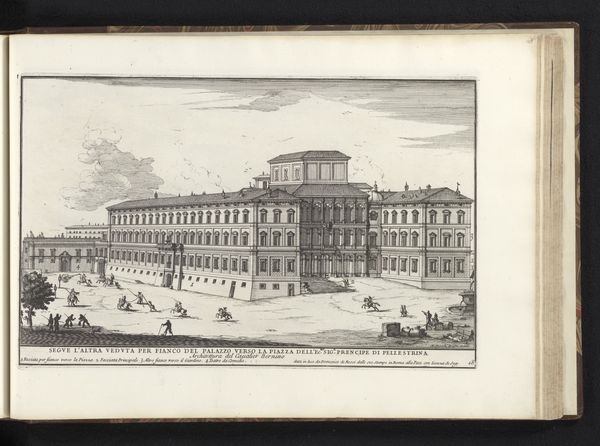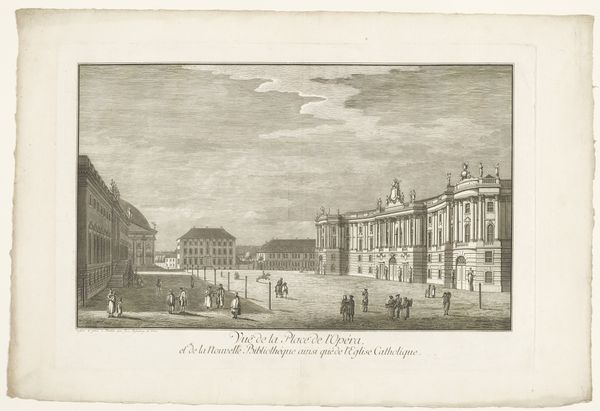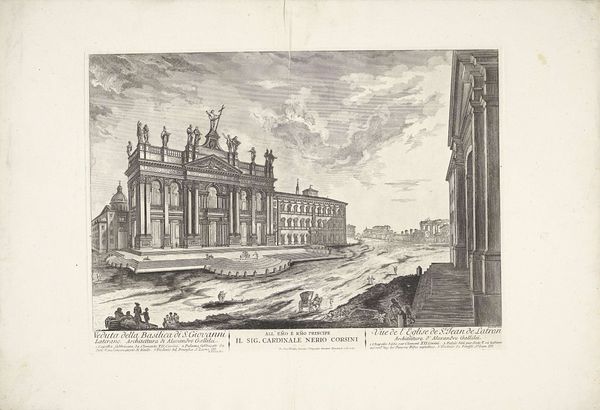
Gezicht op de Sint Pietersbasiliek aan het Sint Pietersplein te Vaticaanstad 1692 - 1706
0:00
0:00
print, engraving
#
baroque
# print
#
perspective
#
cityscape
#
engraving
Dimensions: height 386 mm, width 697 mm, height 56 mm, width 697 mm
Copyright: Rijks Museum: Open Domain
Editor: This engraving, created between 1692 and 1706 by Gommarus Wouters, shows a view of St. Peter's Basilica and square in Vatican City. The detail is really impressive, especially considering it's just a print. What draws your eye in this piece? Curator: Immediately, I notice the material reality embedded in the creation of this image. Think of the engraver meticulously carving the lines into the metal plate, the labor involved in producing numerous prints for circulation. This wasn't just about aesthetics; it was about dissemination, about making visible the power and grandeur of the Catholic Church through a mass-produced medium. Editor: So, the *process* of creating the print is important? Curator: Absolutely. Consider the paper, the ink – all commodities, materials bought and sold in the marketplace. The image itself becomes a commodity, reflecting the growing power of a print culture and its role in shaping perceptions of places like Vatican City. Who would have owned such an print, and what does the act of owning this image reflect about social values at this time? Editor: That makes me think about who the intended audience would have been. Would it have been the wealthy class interested in seeing artwork and having something fancy on the walls? Curator: Likely a range of audiences, including pilgrims who'd been to the city or perhaps were aspiring to visit it one day, a souvenir almost. What might the economics of pilgrimage been at this point, in terms of what sort of trades were conducted in order to undertake such journeys? How are devotional artworks circulating during this time period? How much were these kinds of prints? These sorts of questions move us beyond simply admiring the image. Editor: So, by looking at the materials and production process, we gain a much better sense of its historical context and meaning. Curator: Exactly! It’s about unpacking the layers of material and economic realities that underpinned the making and circulation of this image, understanding how art and craft intertwined in shaping visual culture and even the economic structures of early modernity. Editor: I'll definitely think about that in the future! Thanks!
Comments
No comments
Be the first to comment and join the conversation on the ultimate creative platform.

